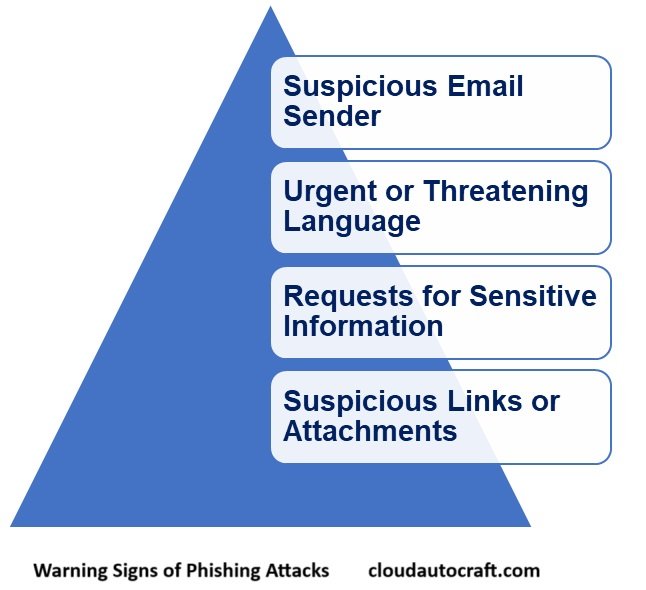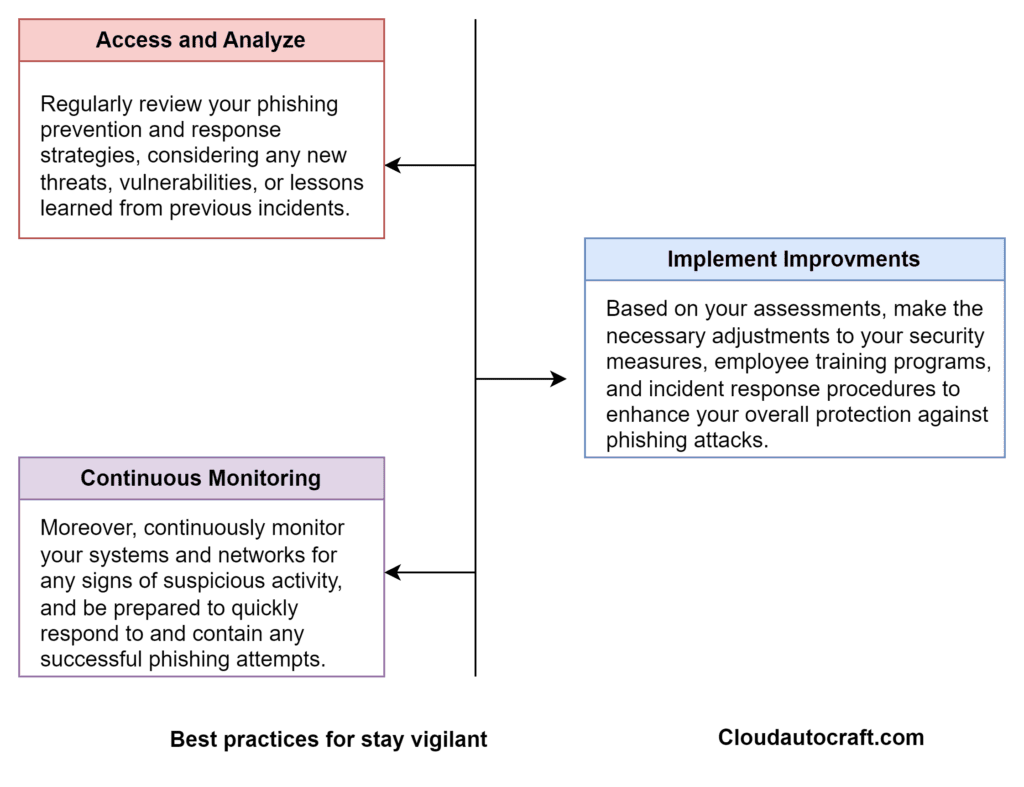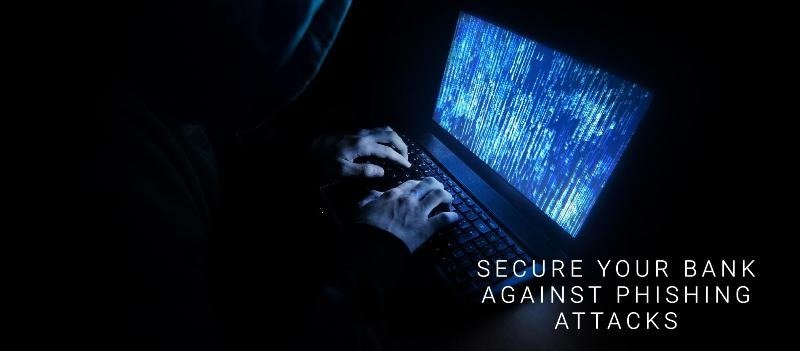Content:
- Introduction
- Understanding The Phishing Attacks
- Recognize the Warning Signs of Phishing Attacks
- Establish Robust Security Measures for Phishing Attacks
- Empower Your Employees about Phishing Attacks
- Collaborate with IT and Security Teams
- Stay Vigilant and Continuously Improve
- Fostering a Culture of Security
- Responding to a Successful Phishing Attack
- Securing Your Financial Institution's Future
- Conclusion: Embrace a Culture of Cybersecurity
- FAQs:
- What steps should be taken if a phishing attack targets a high-ranking executive within the bank?
- What role does artificial intelligence (AI) play in combating phishing attacks in financial institutions?
- How should we handle phishing attacks that exploit social engineering tactics beyond traditional email methods?
- What are the best practices for managing third-party vendor risks related to phishing?
- How can we protect our bank's mobile banking platform from phishing threats?
Introduction
Phishing attacks are a growing threat in the digital world, especially for banks. Cybercriminals use fake emails and websites to trick employees or customers into giving away sensitive information. Once they get access, they can steal money, personal data, and more. Banks must stay one step ahead to protect themselves and their customers. In this blog, we’ll explore the dangers of phishing and share simple ways to secure banking systems. Let’s dive in!
Understanding The Phishing Attacks
Phishing attacks are a type of social engineering. In these attacks, cybercriminals try to trick people into revealing sensitive information, such as login credentials or financial details. They often use the trust and authority of legitimate organizations, like your IT department, to deceive employees.
Understanding common phishing tactics helps your employees stay alert. This allows them to spot and prevent these threats more effectively.
Recognize the Warning Signs of Phishing Attacks

| Suspicious Email Sender: First, check the email address and sender’s domain carefully. Ensure they match the legitimate organization or person they claim to be from. | Urgent or Threatening Language: Phishing emails often use alarming or threatening language to induce immediate reactions. So, they try to pressure you into taking quick action, like sharing your login credentials. |
| Requests for Sensitive Information: Remember, reputable organizations won’t ask for sensitive information, such as passwords or financial details, via email. If you get such a request, it’s probably a phishing attempt. | Suspicious Links or Attachments: Be cautious with links or attachments in emails from unfamiliar or untrusted sources. Clicking on them could expose your device to malware or lead you to fake websites. |
Establish Robust Security Measures for Phishing Attacks
To effectively reduce the risk of phishing attacks, it’s essential to have a thorough security strategy in place. This strategy should include several key measures:
- Firstly, provide regular training for employees on phishing awareness and best practices.
- Additionally, use multi-factor authentication for all critical systems and accounts. Additionally, this provides an extra layer of protection
- Moreover, keep your software updated and patched to fix any vulnerabilities.
- Furthermore, deploy advanced email filtering and security solutions. These can help detect and block phishing attempts more effectively.
- Finally, establish clear incident response protocols. This will ensure that you can quickly address and contain any successful phishing attacks.
Empower Your Employees about Phishing Attacks
Your employees are vital to defending against phishing attacks. You can significantly enhance your institution’s security by equipping them with the knowledge and tools to spot and report suspicious activity.
Encourage Reporting:
Here, encourage a culture where employees are at ease with reporting suspicious activities immediately, knowing their concerns will be addressed without fear of retaliation. Thus, this will help you quickly identify and address potential threats.
Provide Ongoing Training:
Hold regular phishing awareness training sessions to inform employees about the latest tactics and best practices for recognizing and handling these attacks.
Implement Reporting Procedures:
Set up clear and straightforward reporting procedures so employees know exactly how to report suspicious activity to the right security teams.
Learn more about Phishing Attack in this video:
Read More About How to Secure from Ransomware Threat
Collaborate with IT and Security Teams
Effective phishing prevention requires teamwork between your employees and IT and security teams. By collaborating closely, you can ensure a strong and coordinated response to these threats.
Consider IT’s Role:
Your IT team handles setting up and maintaining security measures like email filtering, firewalls, and access controls. These tools help protect your systems and data.
Recognize the Security Team’s Role:
The security team monitors and analyzes threat intelligence. Consequently, it creates and implements plans to respond to successful phishing attacks.
Emphasize Employee Engagement:
Employees are crucial for spotting and reporting suspicious activity. Hence, This helps the IT and security teams quickly address potential threats and reduce the impact of any attacks.
Stay Vigilant and Continuously Improve
Protecting your financial institution from phishing attacks is an ongoing effort that demands constant vigilance and improvement. Since cybercriminals constantly evolve their tactics, staying updated with the latest trends and best practices is essential.

Fostering a Culture of Security
A holistic approach is necessary to protect your financial institution from phishing attacks—beyond just technical measures. Therefore, it is crucial to build a culture of security awareness and responsibility among your employees.
| Cultivate Awareness | Promote Responsibility | Foster Collaboration |
| Firstly, encourage your employees to stay alert for potential phishing attempts. It will make it easier for them to report any suspicious activity without any hesitation. | Secondly, help your employees understand their essential role in protecting your institution’s sensitive information and assets. Moreover, This will instil a sense of personal responsibility. | Furthermore, promote open communication and teamwork between your employees, IT, and security teams. As a result, You can handle phishing threats with a well-coordinated and effective response. |
Responding to a Successful Phishing Attack
Despite your best efforts, a phishing attack might still succeed and compromise your systems or data. Therefore, having a well-defined incident response plan is crucial to minimize damage and quickly regain control.
| Isolate the Affected Systems | First, identify and isolate any compromised systems or accounts to prevent the attack from spreading further. |
| Conduct a Forensic Investigation | Next, work with your security team to thoroughly investigate the incident. Consequently, this will help you understand the extent of the damage and gather evidence for possible legal action. |
| Notify Relevant Parties | Moreover, inform your customers, regulators, and other affected parties about the incident. Provide updates on the steps you’re taking to fix the issue. |
| Implement Corrective Measures | Finally, based on the investigation’s findings, implement the necessary security measures to fix the vulnerabilities that allowed the attack to happen. |
Securing Your Financial Institution’s Future
Adopting a proactive and comprehensive approach to phishing prevention can significantly lower the risk of unauthorized access to your institution’s sensitive data and assets. Therefore, success depends on combining robust security measures, ongoing employee education, and a strong, security-focused culture.

Conclusion: Embrace a Culture of Cybersecurity
Protecting your financial institution from the growing threat of phishing attacks is an ongoing challenge. However, it can be effectively managed with a comprehensive and proactive approach. Firstly, foster a culture of security awareness within your organization. Additionally, implement robust technical measures to strengthen your defences. Empower your employees to recognize and respond to potential threats. By doing so, you can protect your institution’s sensitive data and maintain the trust of your customers.
Furthermore, remember that cybersecurity is not just the responsibility of your IT and security teams – it’s a shared responsibility that requires the engagement and vigilance of every employee. By working together, you can build a resilient and secure financial institution ready to face the evolving cybersecurity threats.
Click here to Read more about Ransomware Threat: How to Secure Your Business – 2024 && Insider Threat: How to Secure Your Business – 2024
FAQs:
What steps should be taken if a phishing attack targets a high-ranking executive within the bank?
Answer: When a high-ranking executive is targeted, isolate the compromised accounts immediately. Next, carry out a swift and thorough forensic investigation. Additionally, review and update the security protocols for high-value targets within the institution to prevent future attacks.
What role does artificial intelligence (AI) play in combating phishing attacks in financial institutions?
Answer: AI plays a crucial role in enhancing security by enabling real-time threat detection and analysing communication patterns and anomalies. It also automates incident response and improves email filtering systems, making them more effective at identifying and blocking phishing attempts.
How should we handle phishing attacks that exploit social engineering tactics beyond traditional email methods?
Answer: To manage these attacks, create a comprehensive response plan that includes monitoring social media and other communication channels. Additionally, train employees on different social engineering tactics and establish clear procedures for reporting and handling suspicious activities.
How can we protect our bank’s mobile banking platform from phishing threats?
Answer: Protecting the mobile platform begins with implementing multi-factor authentication and using secure coding practices. Moreover, conduct regular security audits and educate customers on recognizing and reporting mobile phishing attempts to maintain a safe environment.
Originally posted 2024-05-18 06:24:25.


7 thoughts on “Phishing Attacks: How to Secure Banks”